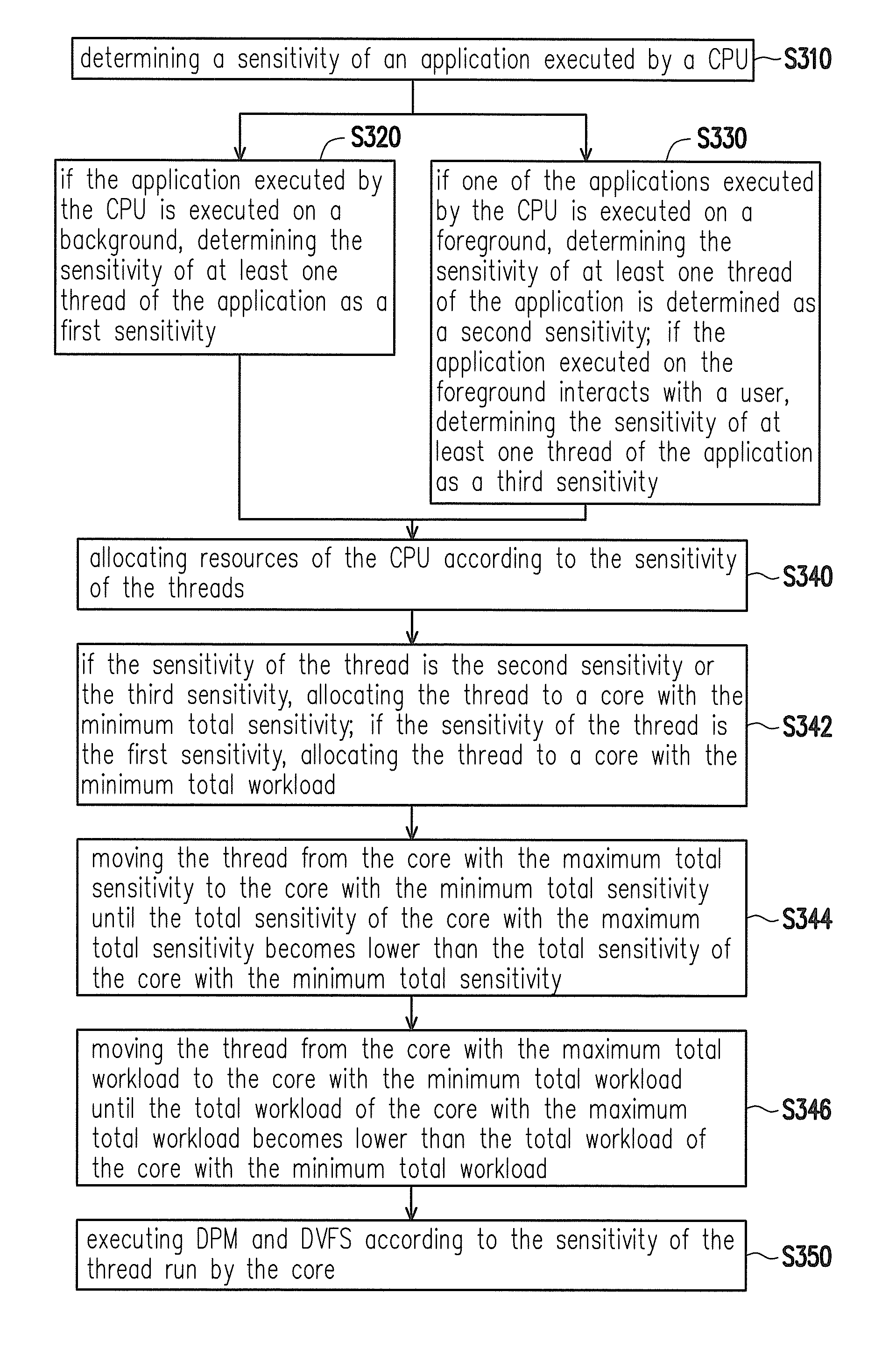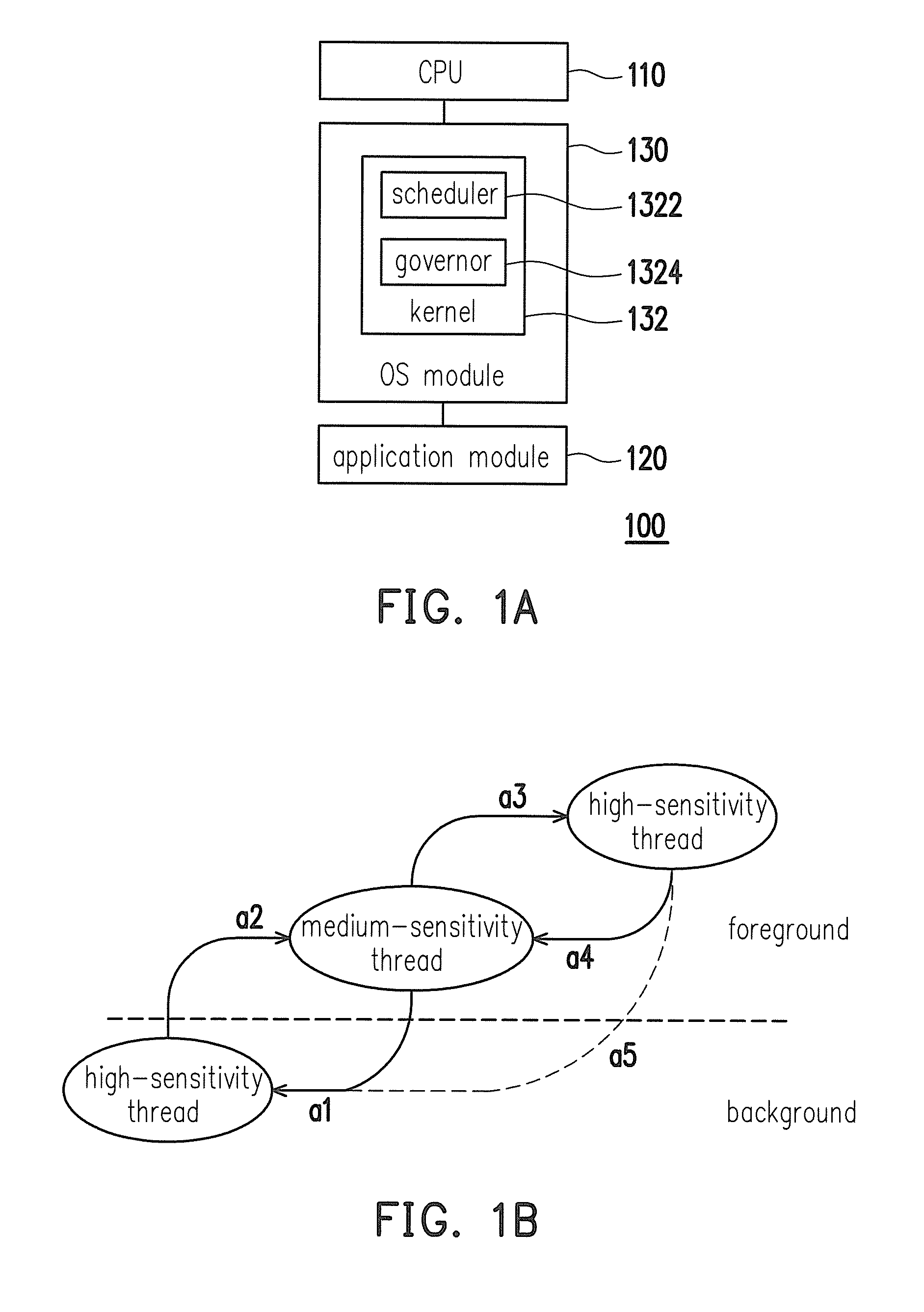Resource allocation method
a resource allocation and resource technology, applied in the field of system scheduling technique, can solve the problems of significant power consumption, inability to enhance system performance, and challenge to design dvfs and dpm, so as to improve user experience, reduce energy efficiency, and facilitate user experience
- Summary
- Abstract
- Description
- Claims
- Application Information
AI Technical Summary
Benefits of technology
Problems solved by technology
Method used
Image
Examples
Embodiment Construction
[0018]To satisfy users' needs for mobile devices, modern mobile applications provide a large variety of functionalities, some of which are delay-sensitive, while others are delay-tolerant. Specifically, “delay-tolerant applications” (e.g., file zipping applications) can be delayed without affecting the users' experiences, i.e., the delay-tolerant applications need not respond in a real-time manner. By contrast, “delay-sensitive applications”, such as video playing applications, are extremely sensitive to delays from the users' points of view and thus require timely responses. In other words, different applications may have different sensitivities in terms of user perception, and accordingly the resources of the CPU should be allocated unfairly according to the sensitivity of each application. The applications with high sensitivity should obtain more resources from the CPU to improve the users' experiences, and the applications with low sensitivity should obtain less resources from t...
PUM
 Login to View More
Login to View More Abstract
Description
Claims
Application Information
 Login to View More
Login to View More - R&D
- Intellectual Property
- Life Sciences
- Materials
- Tech Scout
- Unparalleled Data Quality
- Higher Quality Content
- 60% Fewer Hallucinations
Browse by: Latest US Patents, China's latest patents, Technical Efficacy Thesaurus, Application Domain, Technology Topic, Popular Technical Reports.
© 2025 PatSnap. All rights reserved.Legal|Privacy policy|Modern Slavery Act Transparency Statement|Sitemap|About US| Contact US: help@patsnap.com



